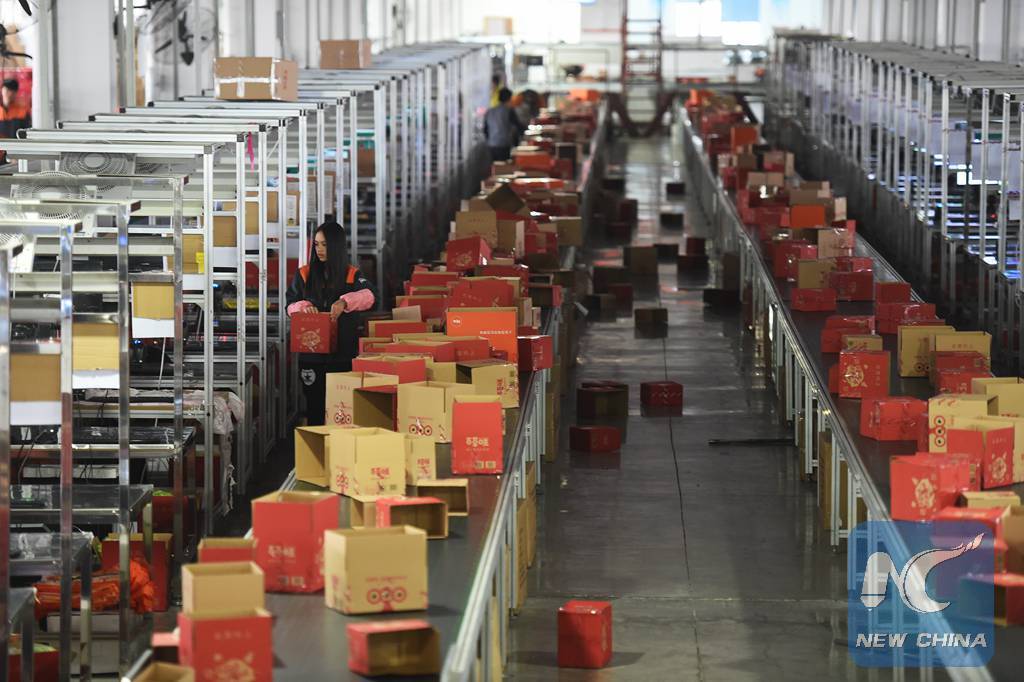
Aerial photo taken on Sept. 19, 2015 shows the Waigaoqiao container pier of the Shanghai free trade zone (FTZ) in Shanghai, east China. (Xinhua/Pei Xin)
RIO DE JANEIRO, Nov. 4 (Xinhua) -- Ties between Latin America and China have continuously strengthened through efforts on both sides, according to a Brazilian political observer.
In the lead up to the summit of leaders from the Asia-Pacific Economic Cooperation (APEC) forum, scheduled to take place in the Peruvian capital Lima later this month, Mauricio Santoro, professor of international relations at the State University of Rio de Janeiro, spoke with Xinhua about Latin America-China ties.
Recent high-level visits between the two sides underscore the importance of the relationship, noted Santoro.
Visits by Chinese President Xi Jinping, Premier Li Keqiang and other senior Chinese officials are significant evidence that China attaches great importance to its relations with the region, and another indicator is growing investment from Chinese companies, especially in infrastructure, said Santoro.
Trade between China and Latin America has grown more than 20 fold since 2000, said Santoro, citing data from the Economic Commission for Latin America and the Caribbean (ECLAC). The speed of growth is also confirmed by Chinese official statistics.
"China is now the largest or second-largest trading partner of most Latin American countries," he added.
What's more, both sides have made it clear they favor expanding ties further, as partnerships such as the Forum of China and the Community of Latin American and Caribbean States (CELAC) suggest, he said.
"The creation of the China-CELAC Forum is significant as it unites the Asian country with the various countries of the region, allowing them to debate relevant topics from a broader multilateral perspective," said Santoro.
More importantly, he added, "it shows the interest both sides have in deepening ties against the backdrop of the global economic crisis and sluggish growth in the United States and Europe."
Since the forum's creation, the political climate in South America has grown more conservative, with center-right governments coming into power in Argentina and Brazil.

Workers sort out goods bought by customers online at a deliver center in Hangzhou, capital of east China's Zhejiang Province, Nov. 9, 2015. (Xinhua/Huang Zongzhi)
However, these political changes are transient compared to the more farsighted goal China and Latin America have of joining forces to better weather the uncertainty of the world economy, he said.
"These are the long-term objectives, which are beyond changes in government in Latin America, and beyond left-wing or right-wing presidents," said Santoro.
He noted the two sides need to address the imbalance of trade between China and Latin America.
Latin American countries are mostly exporting raw materials (food, minerals, oil) and primarily importing manufactured goods from China, he said.
In a bid to reduce the imbalance, China and agencies such as ECLAC have called on Latin American governments to invest more in human resources, education, science and technology, as the two regions continue to boost cooperation in trade, investment and production capacity.
"We have a positive example in the agreement between the Brazilian postal service Correios and Chinese e-commerce giant Alibaba, to cooperate in their logistical chains," said Santoro.
"Today, there is much more that can be done in terms of economies of scale, cooperation and partnerships. The challenge for Chinese and Latin American companies now is to develop their ability to improve their commerce intelligence, analytic capacity and political involvement with foreign partners," Santoro said.

